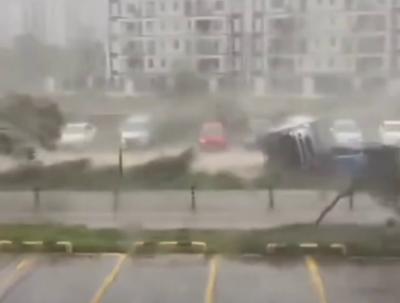Why People in China Decided to Rope Their Cars to Trees

-
Category
-
Author
-
332
-
0
-
28Sep, 2025
As Super Typhoon Ragasa struck southern China in late September 2025, unusual images began circulating online: cars strapped tightly to trees with ropes. At first glance, the sight looked bizarre, but for local residents it was a desperate attempt at storm protection.
With wind speeds reaching more than 200 km/h, even heavy vehicles risk being shifted, overturned, or swept away. To reduce damage, residents in Guangdong and surrounding provinces used thick ropes to anchor their cars to sturdy trees, poles, or other fixed structures. This improvised method, while not foolproof, helps prevent cars from rolling into buildings, blocking roads, or being carried by floodwaters.
Typhoon Ragasa forced the evacuation of nearly 1.9 million people in Guangdong. Rail services, schools, and businesses were suspended. Along the coast, hurricane-force winds, torrential rains, and severe flooding were reported, with major disruptions in Shenzhen, Zhuhai, and Yangjiang.
Although tying cars to trees may appear unusual, it illustrates how people adapt quickly in the face of increasingly powerful tropical cyclones. For many families without access to garages or secure shelters, ropes and strong trees became their last line of defense against the world’s strongest storm of the year.
Photo: Viral image shared on social media during Typhoon Ragasa.

















